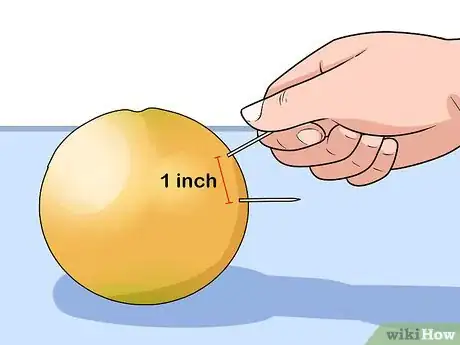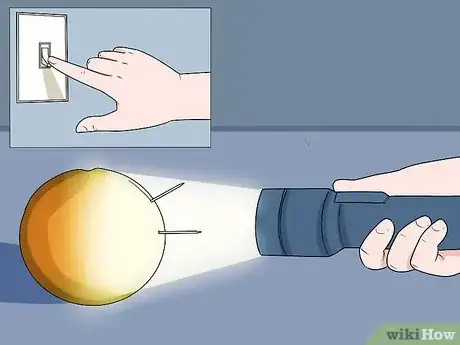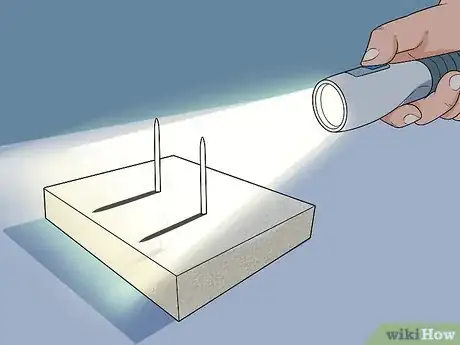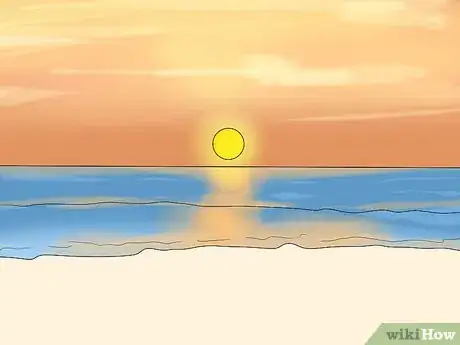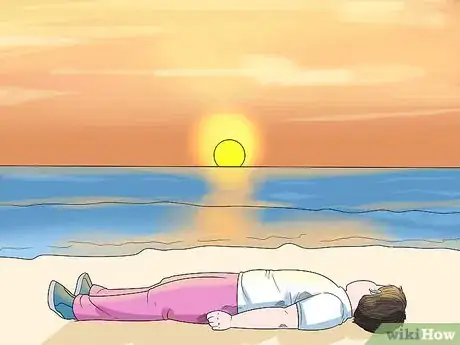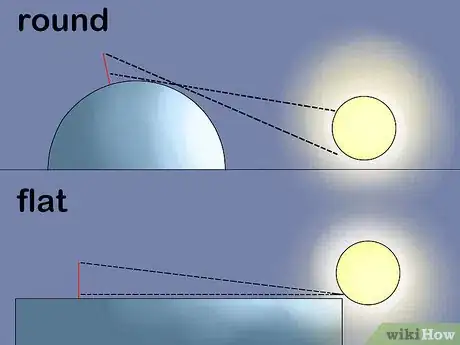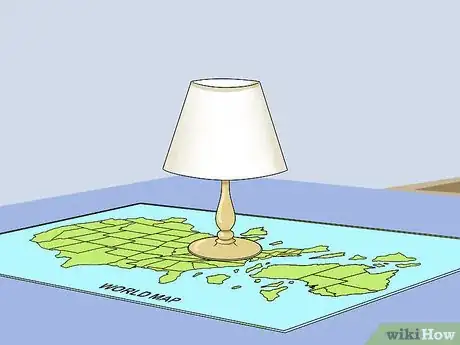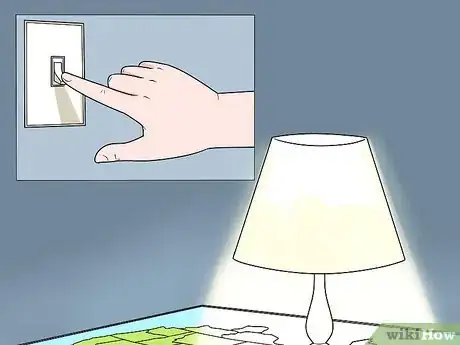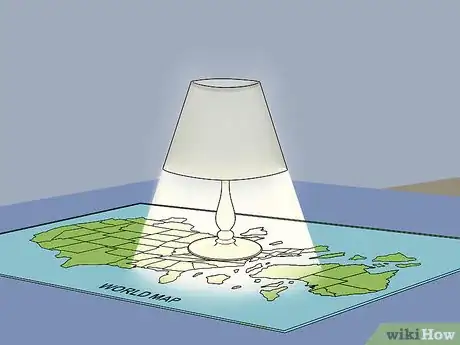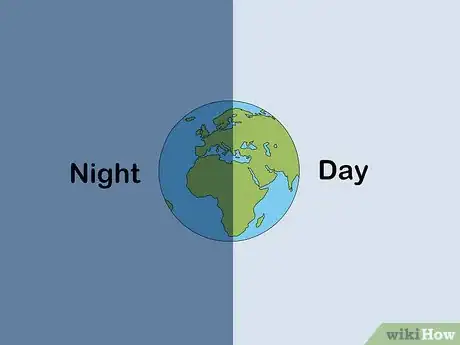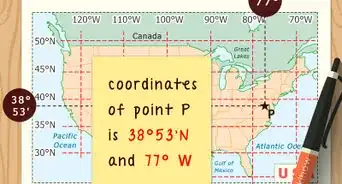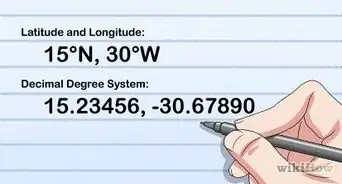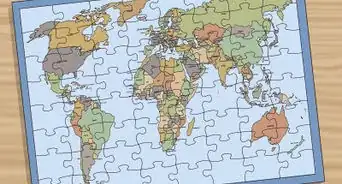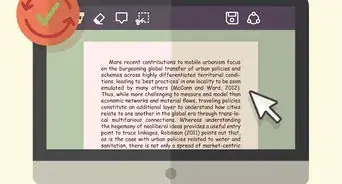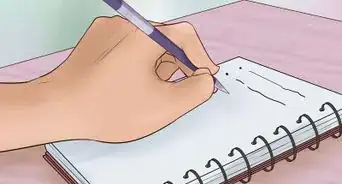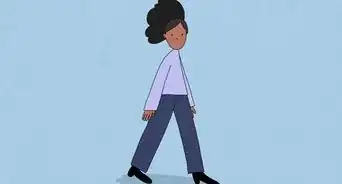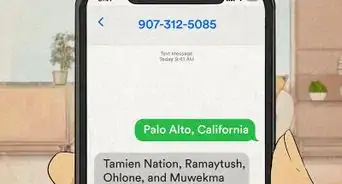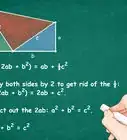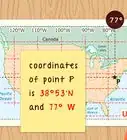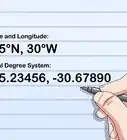This article was co-authored by wikiHow staff writer, Kyle Hall. Kyle Hall works on the content team at wikiHow. He helps manage our team of editors and creates content for a variety of wikiHow projects. Kyle continually looks for new ways to improve the content at wikiHow and make it more helpful and enjoyable for readers. He graduated from Eckerd College in 2015, where he majored in Political Science.
This article has been viewed 39,265 times.
Learn more...
Although it’s been said that Christopher Columbus discovered the earth is round, it was actually the ancient Greeks that first made the discovery.[1] While it’s not immediately obvious that the earth is round from where you’re standing, there’s actually proof of the earth’s curvature all around you. In fact, you can prove the world isn't flat with a few simple experiments!
Steps
Using the Toothpick Experiment
-
1Stick 2 toothpicks into the side of an orange. Place the toothpicks about 1 inch (2.5 cm) away from each other. In this experiment, the orange will represent the earth, and the toothpicks will represent objects located in 2 different countries on earth.[2]
-
2Turn off all the lights and shine a flashlight on the toothpicks. The flashlight will represent the sun in this experiment. Make sure the flashlight is the only light in the room with you.[3]
- This experiment works best at night when there's no natural light.
Advertisement -
3Observe the shadows the toothpicks cast on the orange. Notice how the shadow of each toothpick is a different length and going in a different direction. Even if you move the flashlight around, the shadows will still be different.[4]
-
4Repeat, but this time with the toothpicks stuck in a flat surface. A flat styrofoam plate or a piece of cardboard will work. Keep the toothpicks the same distance apart as they were on the orange. In this version of the experiment, the flat surface will represent a flat earth.[5]
- Shine the flashlight on the toothpicks and notice how they both have the same shadow. No matter where you move the flashlight, the toothpicks’ shadows will be nearly identical.
-
5Ask yourself which set of shadows resemble what we see on earth. It’s the shadows you saw on the orange, of course! After all, based on our observations here on earth, we know that identical objects located in different parts of the world will have different shadows at the same time of day. That’s because the roundness of the earth affects how the shadows are cast.[6]
- If the earth was flat, then identical objects would have the same shadows no matter where they were located in the world. Since that's not what we observe here on earth, we know the earth isn't flat!
Watching the Sunset
-
1Find a spot outside just before sunset where you can see the horizon. A flat area without any trees or buildings is best, like an open field or the beach. This experiment works best on a day with clear skies.[7]
-
2Lay down on your back and turn your head toward the sun. Make sure you can still see the horizon when you're laying down. If you can't, look for a spot with a clear view.[8]
-
3Wait for the sun to set and then quickly stand up to see the sun again. You want to stand up as soon as the sun sets beneath the horizon. When you do, notice how you can see the sun setting over the horizon again.[9]
-
4Ask yourself why a round earth makes this possible. Think about it: if the earth was flat, it wouldn’t make a difference if you stood up quickly after the sunset — the sun would still be gone below the flat edge of the earth. But since the world is round, standing up lets you see further over the earth’s curve. That’s why you’re able to see the sunset twice!
- If you were to let the sun set again, and then quickly get up to a higher viewpoint, you could see the sunset for a third time!
Experimenting with a Globe
-
1Place a lamp in between a globe and a world map. For this experiment, the globe will represent a round earth, and the map will represent a flat earth. The lamp in the middle will be the sun.[10]
-
2Turn off all the lights in the room except for the lamp. This experiment works best when it’s dark out or all the windows in the room are covered. You want the light coming from the lamp to be the only light in the room.[11]
-
3Observe how the light shines on the globe and the map differently. Look at the globe and notice how half of it is lit up and half of it is dark. Then, notice how the map is completely illuminated.[12]
-
4Ask yourself whether the round globe or flat map seems more realistic. The globe does, right? After all, if the earth was flat like the map, then all of the earth would be lit up by the sun at the same time. That wouldn’t make sense, since we know that the whole world doesn’t experience day and night at the same time.[13]
- With the globe, half of it is lit up while the other half is dark. That’s the same as what we observe here on earth — half of the world experiences day while the other half experiences night. Therefore, it makes sense that the earth is round!
Community Q&A
-
QuestionHow do we know that the Earth is round?
 Community AnswerWhen a ship on the ocean is going further away it does not just get smaller and smaller, but instead the level of the ship (relative compared to you) drops, thus proving the Earth round. If the Earth was flat, then the ship would just decrease in size, not drop.
Community AnswerWhen a ship on the ocean is going further away it does not just get smaller and smaller, but instead the level of the ship (relative compared to you) drops, thus proving the Earth round. If the Earth was flat, then the ship would just decrease in size, not drop. -
QuestionIs there anything in the sky that is not actually round?
 HanCommunity AnswerMany meteoroids and comets aren't round. For example, take a look at comet 67P: it consists of two smaller lobes. Small objects like this often have an irregular shape because they don't have enough gravity to contract into a sphere.
HanCommunity AnswerMany meteoroids and comets aren't round. For example, take a look at comet 67P: it consists of two smaller lobes. Small objects like this often have an irregular shape because they don't have enough gravity to contract into a sphere. -
QuestionWhat is the approximate shape of Earth?
 HannahCommunity AnswerIt's not a perfect sphere, but rather an oblate spheroid or ellipsoid, which means that the poles are slightly "squished" together and on the equator, there is a slight bulge. This happens because of the Earth's rotation. The centrifugal force pulls the parts with more mass further away from the rotational axis.
HannahCommunity AnswerIt's not a perfect sphere, but rather an oblate spheroid or ellipsoid, which means that the poles are slightly "squished" together and on the equator, there is a slight bulge. This happens because of the Earth's rotation. The centrifugal force pulls the parts with more mass further away from the rotational axis.
Things You’ll Need
Using the Toothpick Experiment
- 2 toothpicks
- Orange
- Piece of cardboard or styrofoam plate
Experimenting with a Globe
- Globe
- World map
- Lamp
References
- ↑ http://www.bbc.com/earth/story/20160126-how-we-know-earth-is-round
- ↑ http://www.smarterthanthat.com/experiments/the-earths-curvature-is-tasty/
- ↑ http://www.smarterthanthat.com/experiments/the-earths-curvature-is-tasty/
- ↑ http://www.smarterthanthat.com/experiments/the-earths-curvature-is-tasty/
- ↑ http://www.smarterthanthat.com/experiments/the-earths-curvature-is-tasty/
- ↑ http://www.smarterthanthat.com/experiments/the-earths-curvature-is-tasty/
- ↑ https://www.astro.princeton.edu/~dns/teachersguide/MeasECAct.html
- ↑ https://www.astro.princeton.edu/~dns/teachersguide/MeasECAct.html
- ↑ https://www.astro.princeton.edu/~dns/teachersguide/MeasECAct.html
- ↑ https://www.pbs.org/newshour/science/7-diy-experiments-b-o-b-the-earth-is-round
- ↑ https://www.pbs.org/newshour/science/7-diy-experiments-b-o-b-the-earth-is-round
- ↑ https://www.pbs.org/newshour/science/7-diy-experiments-b-o-b-the-earth-is-round
- ↑ https://www.pbs.org/newshour/science/7-diy-experiments-b-o-b-the-earth-is-round
About This Article
One way to prove the earth is round is to lie on the ground and watch the sun set below the horizon. After the sun sets, quickly stand up and look at the horizon — you should be able to see the sunset again! This is possible because of your higher vantage point. By standing up, you're able to see further over the earth's curve and catch a second glimpse of the sun. If the earth was flat, this wouldn't work! For more ways to prove the earth is round, like experimenting with toothpicks or using a lamp and a globe, read on!
